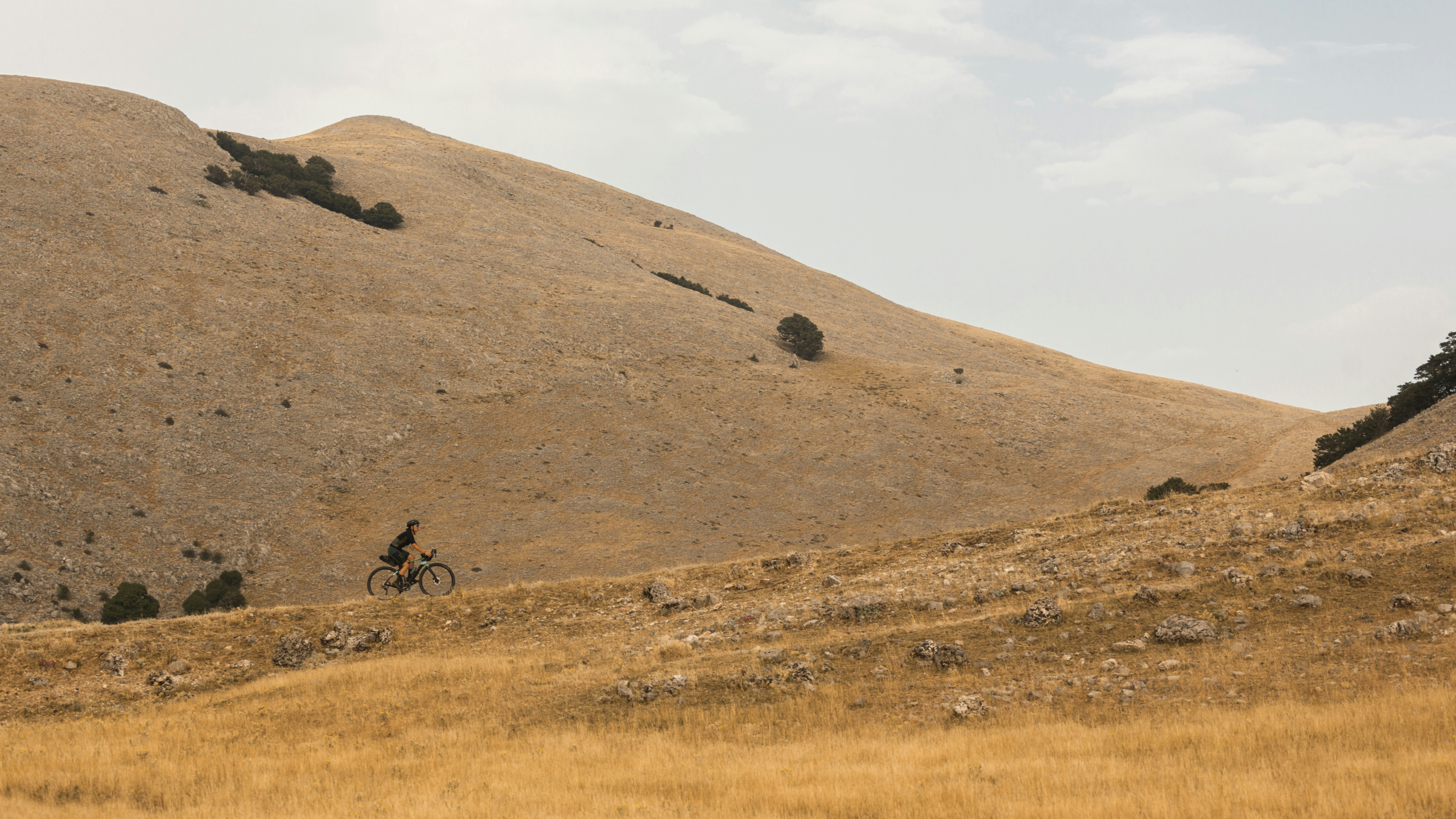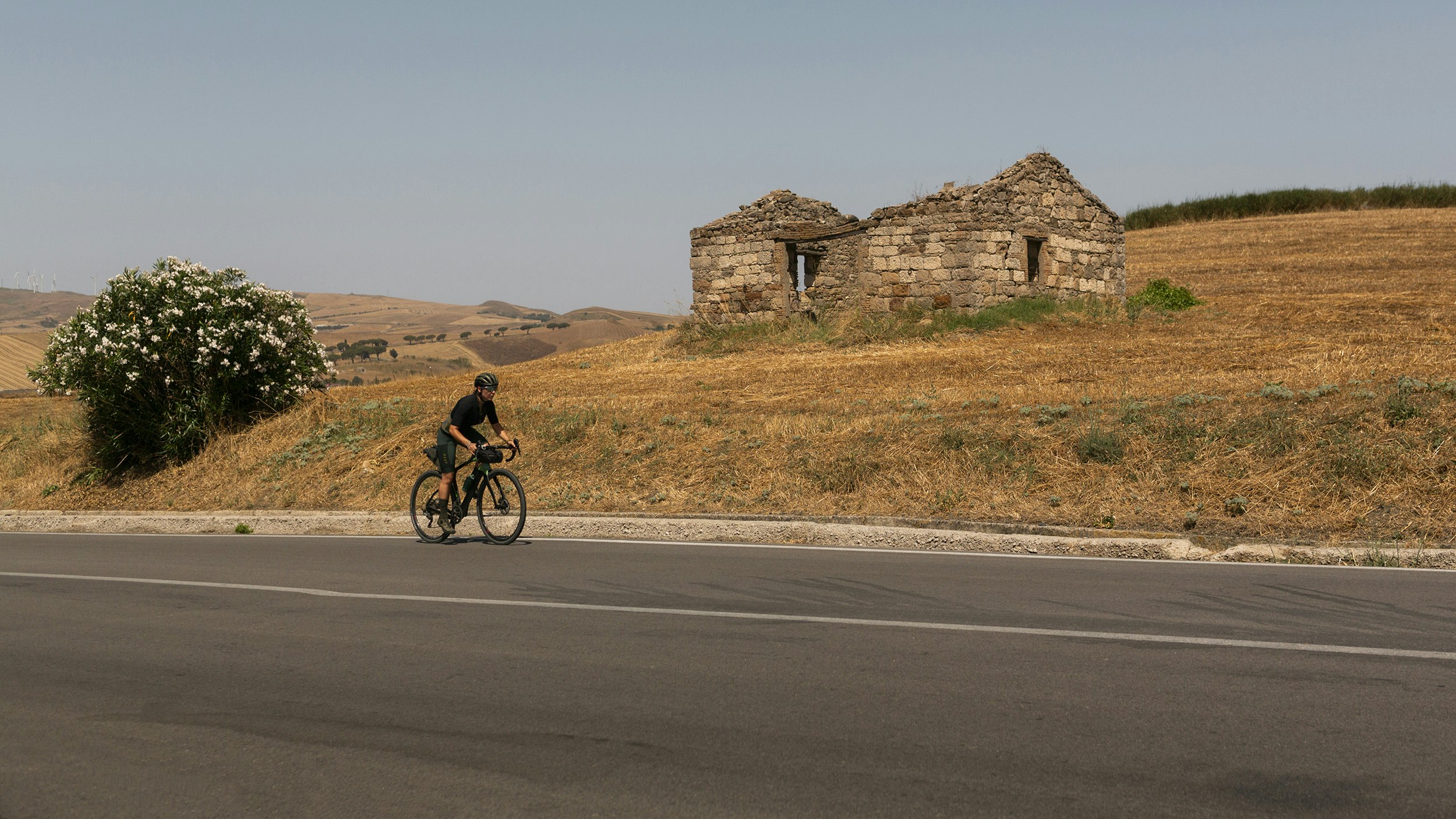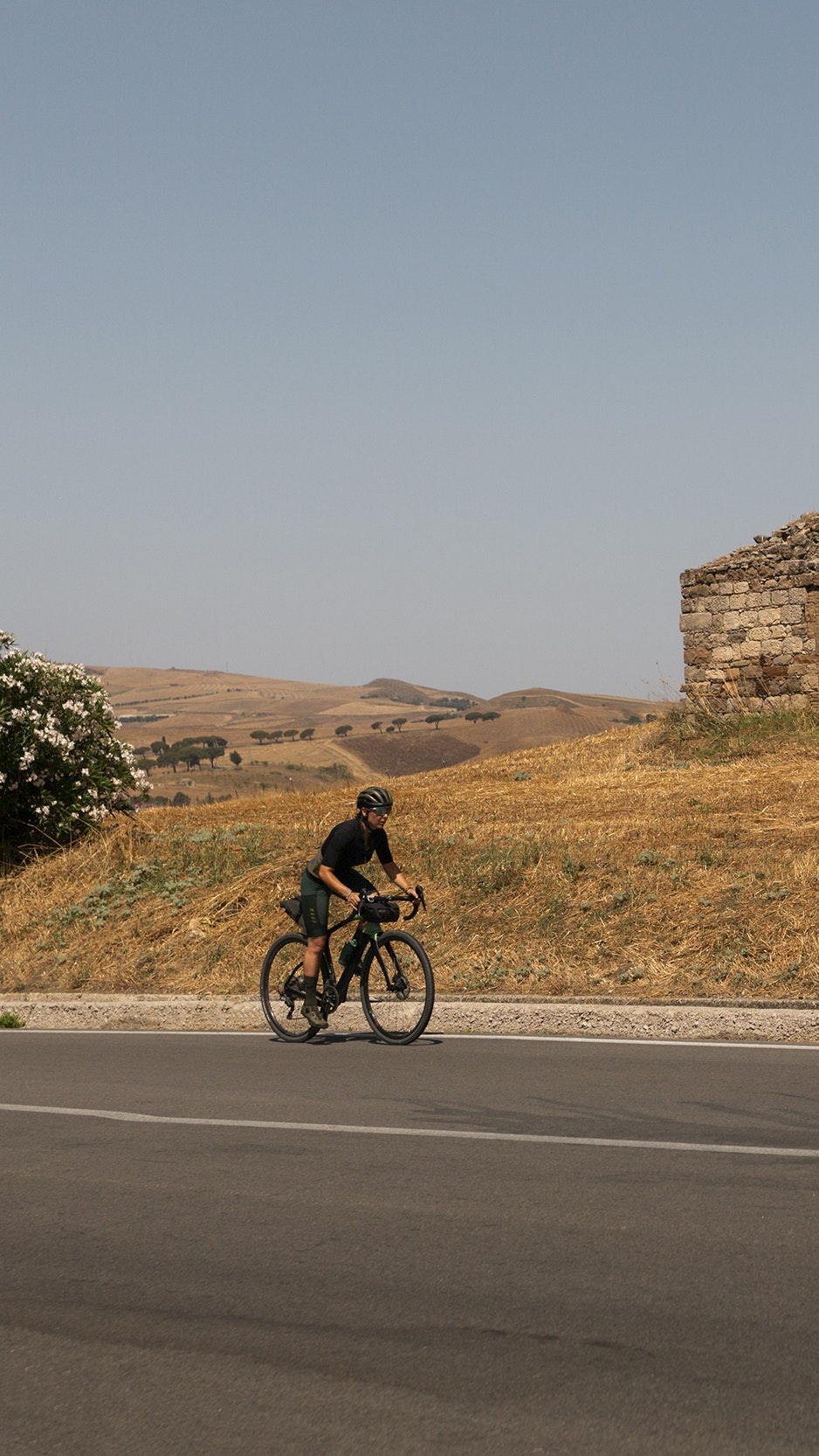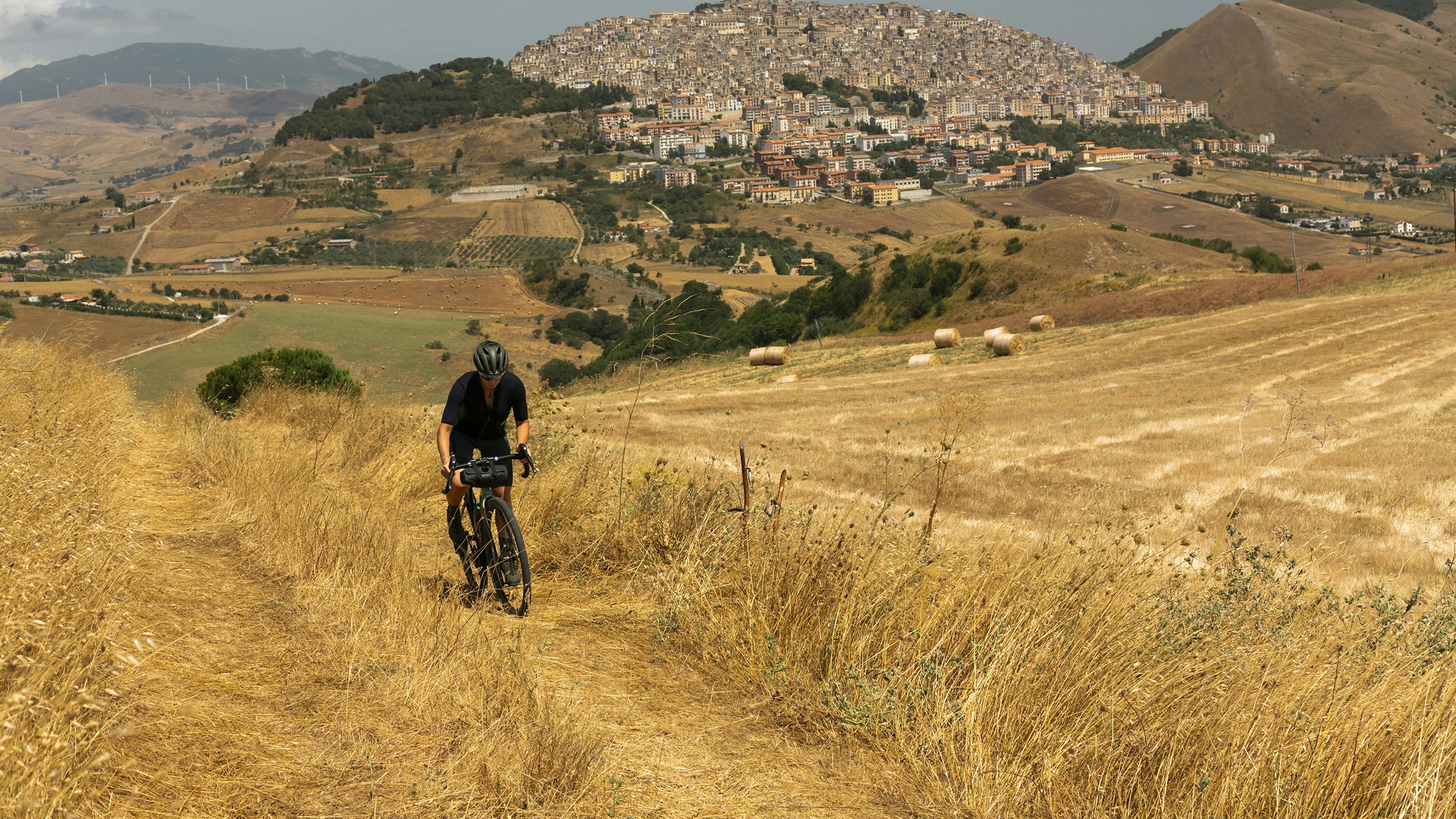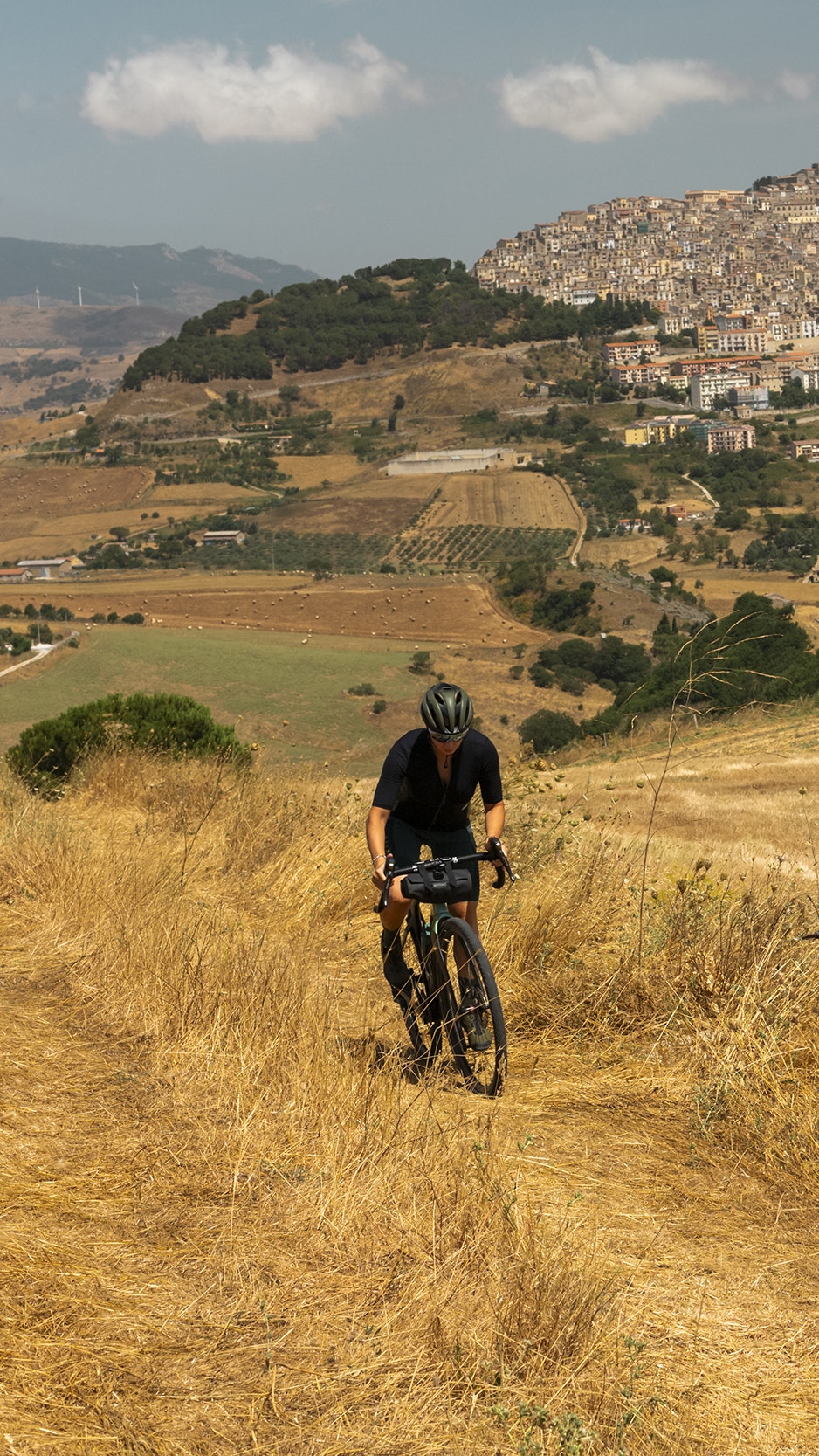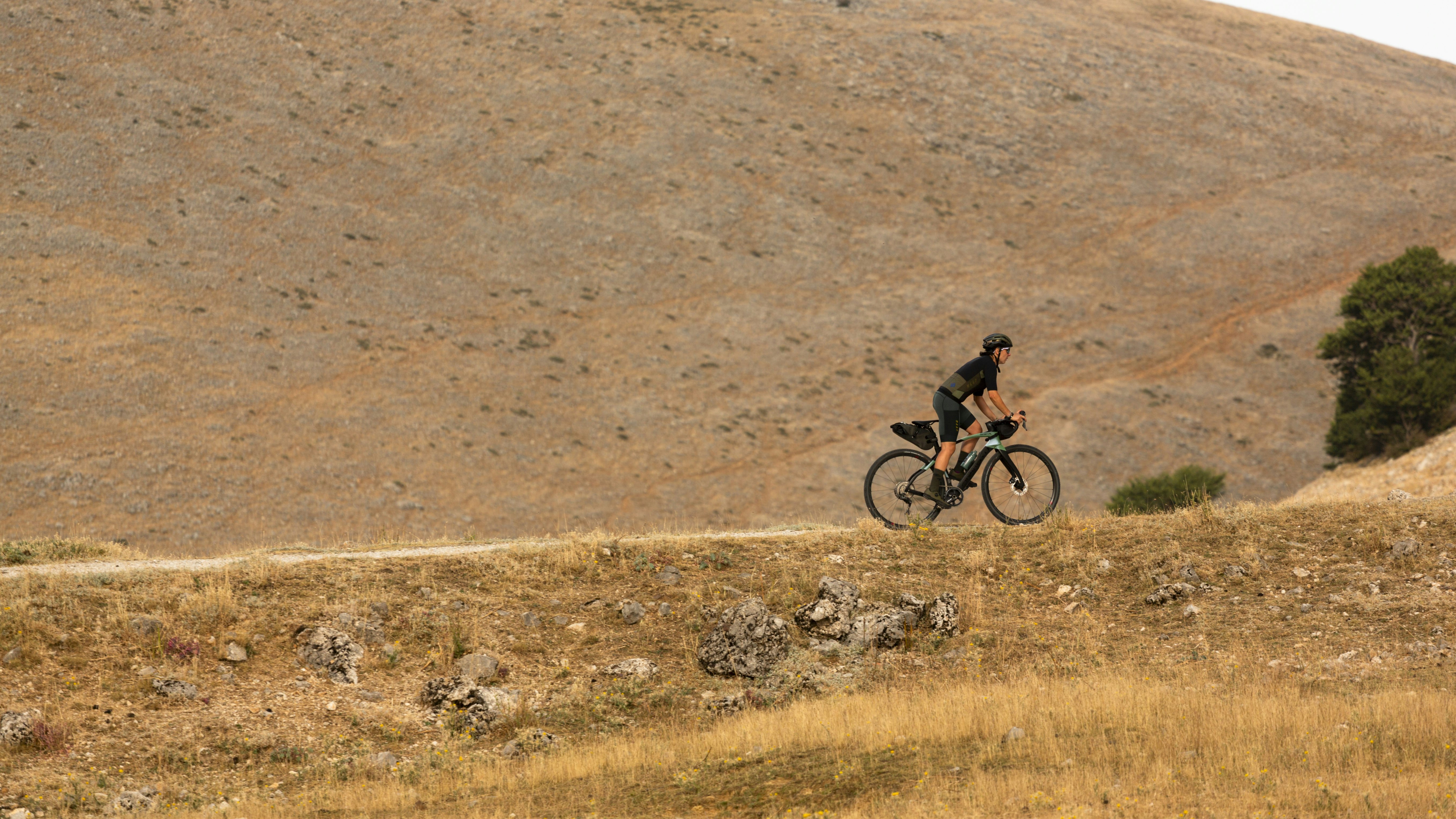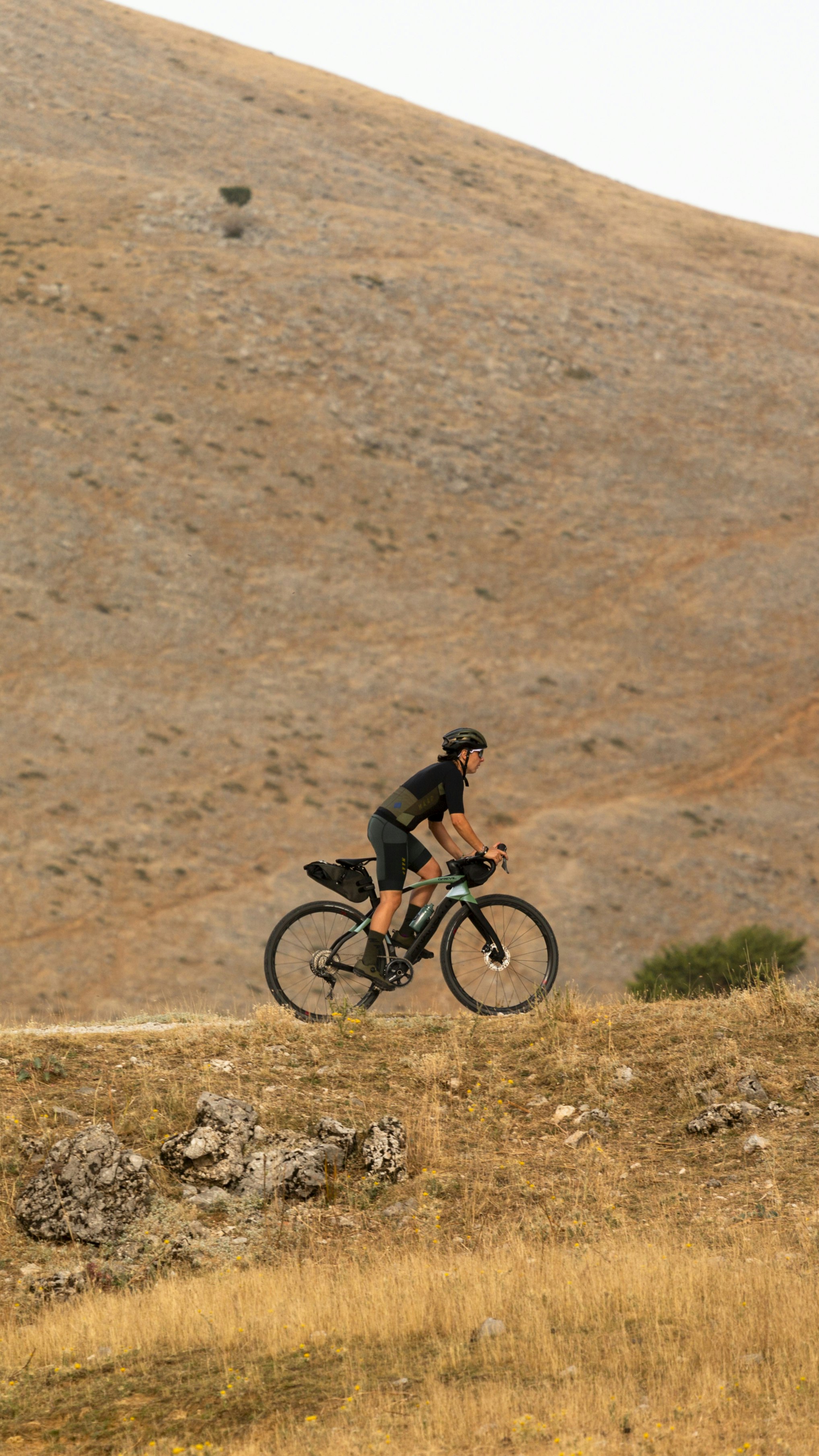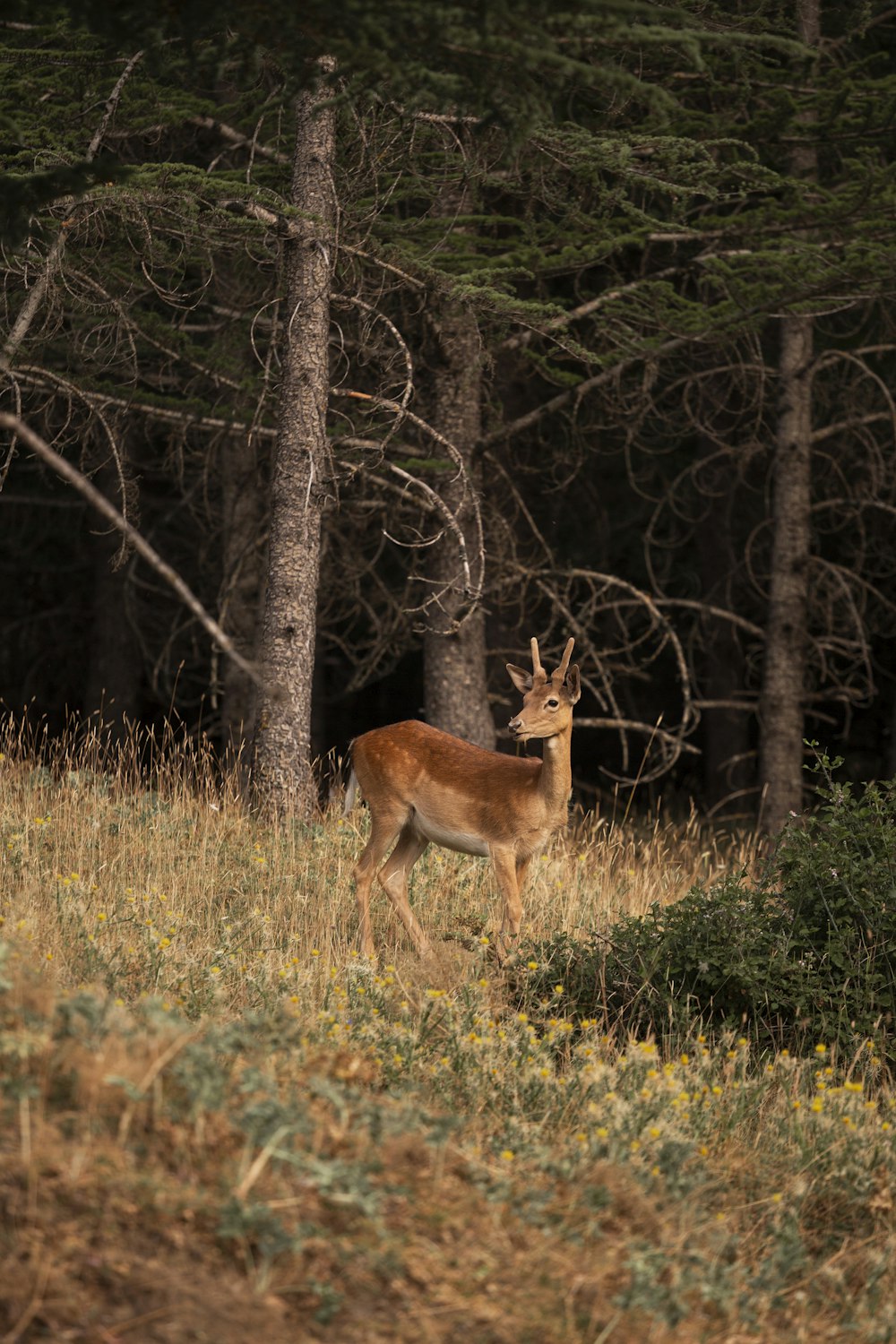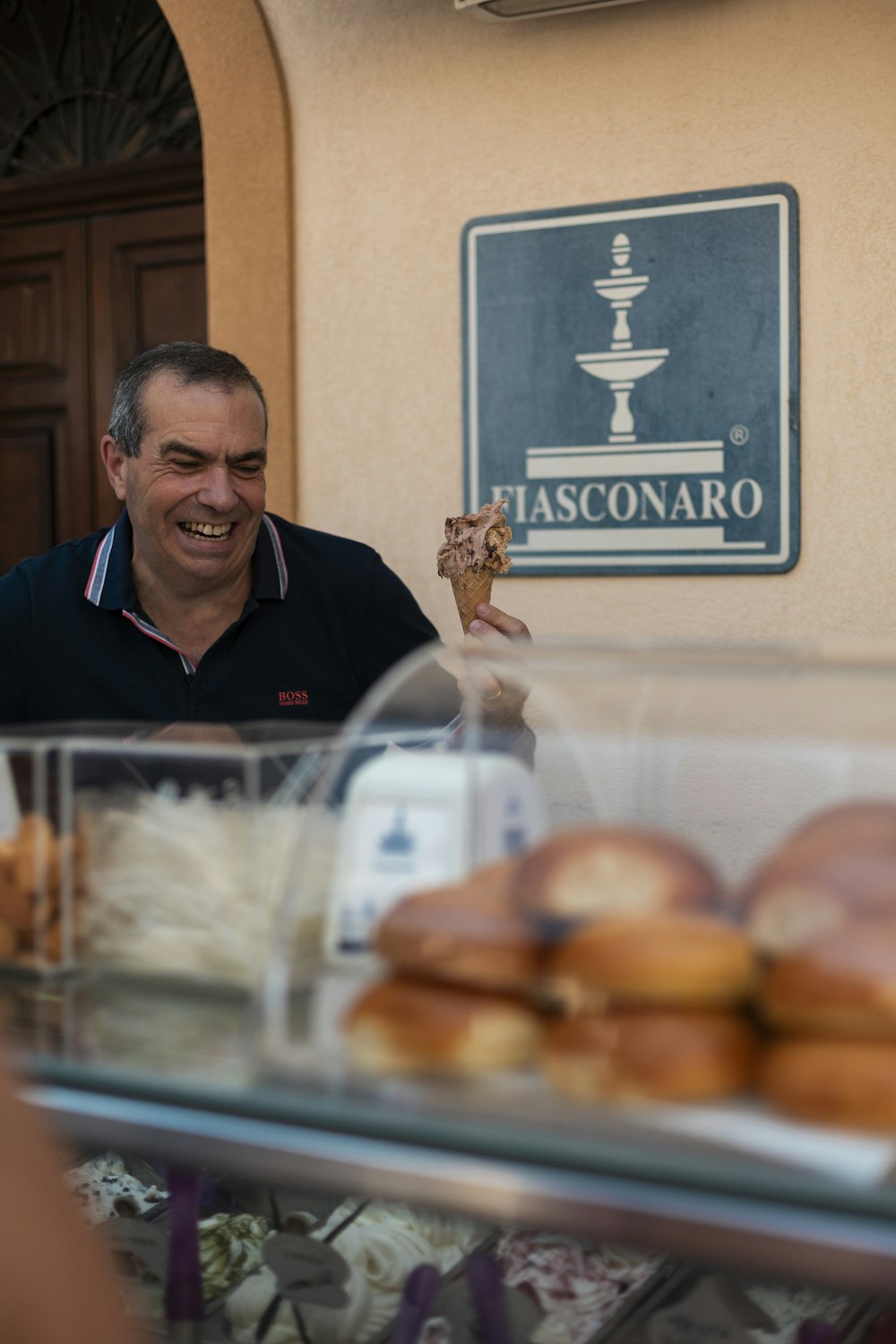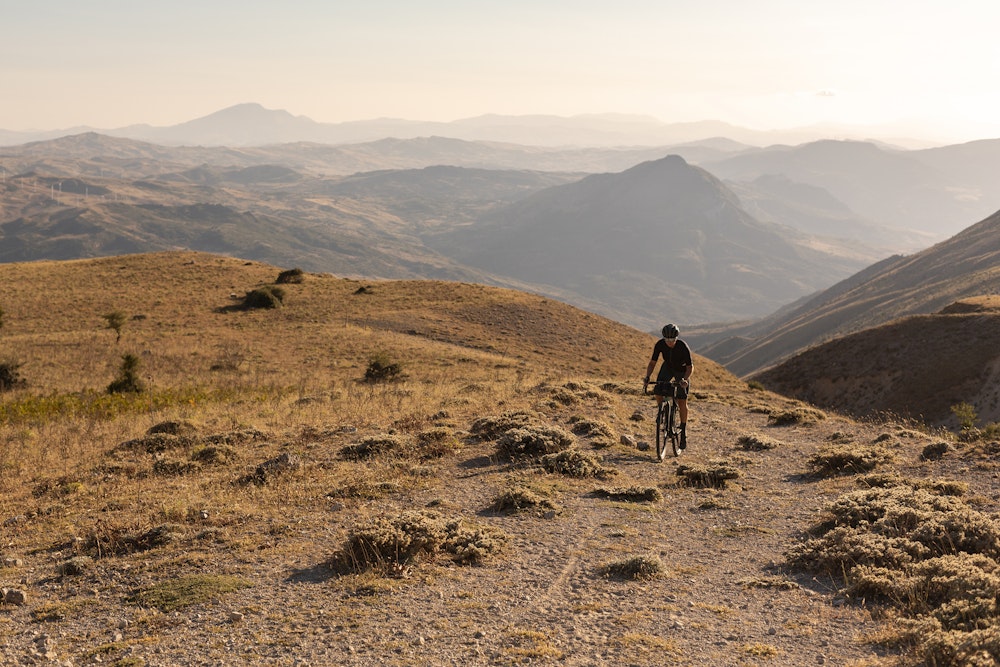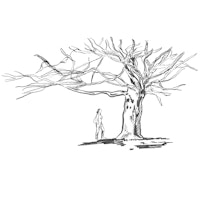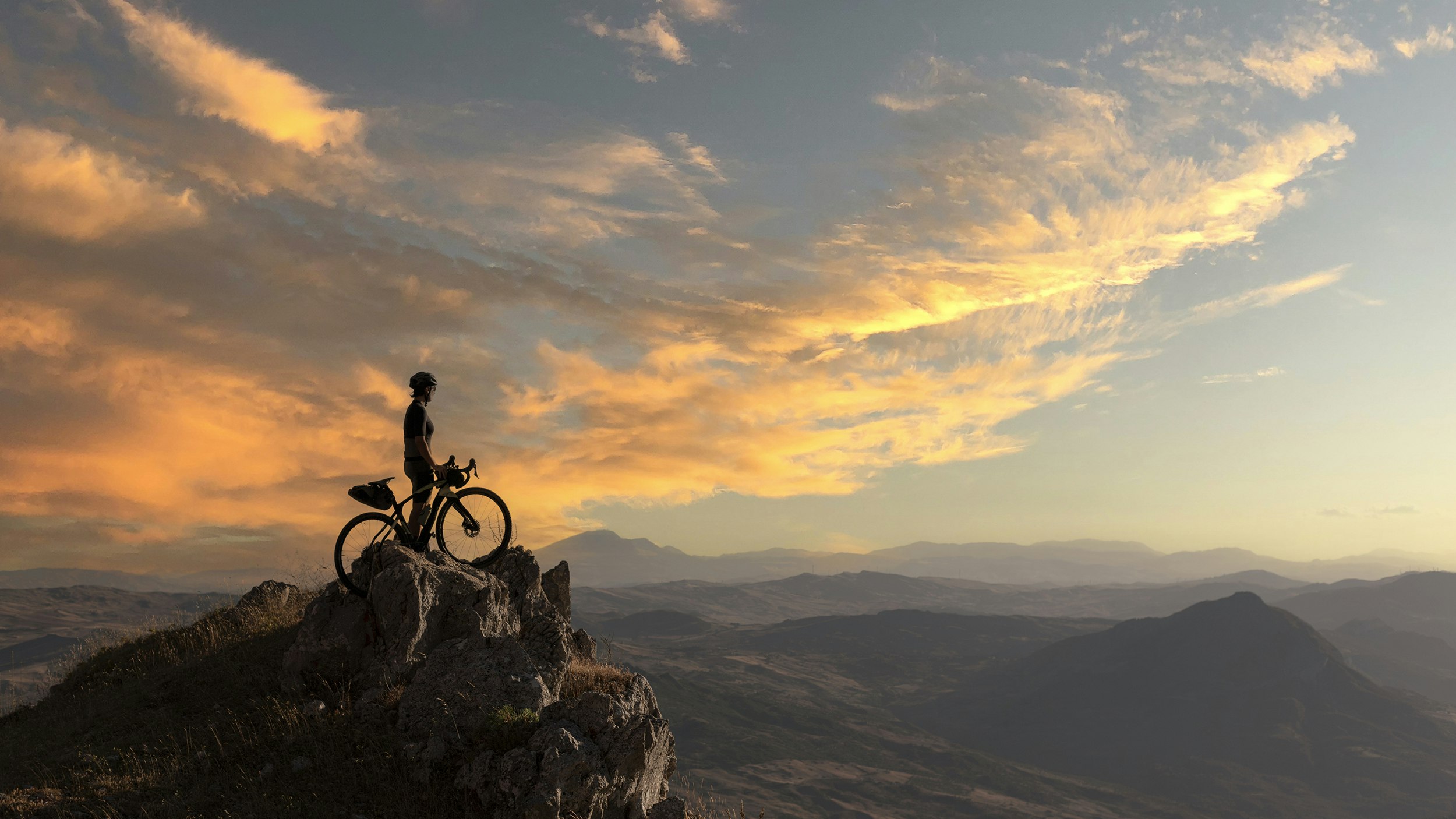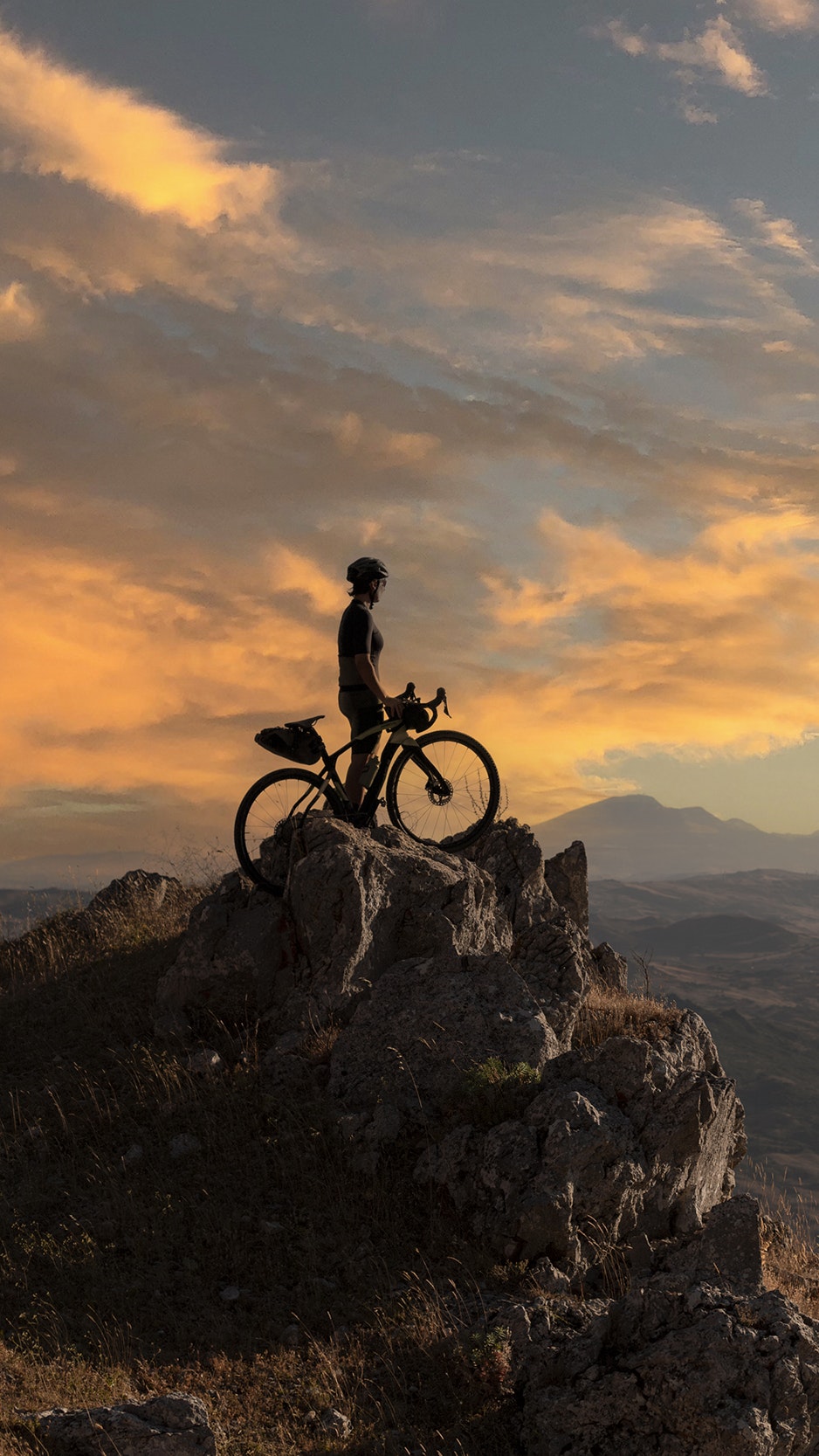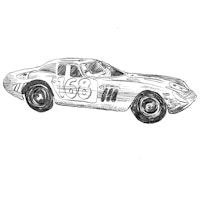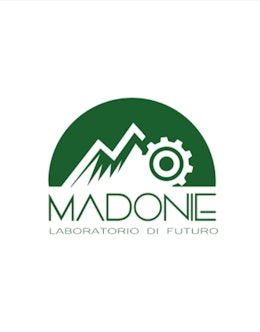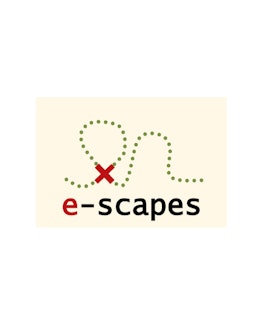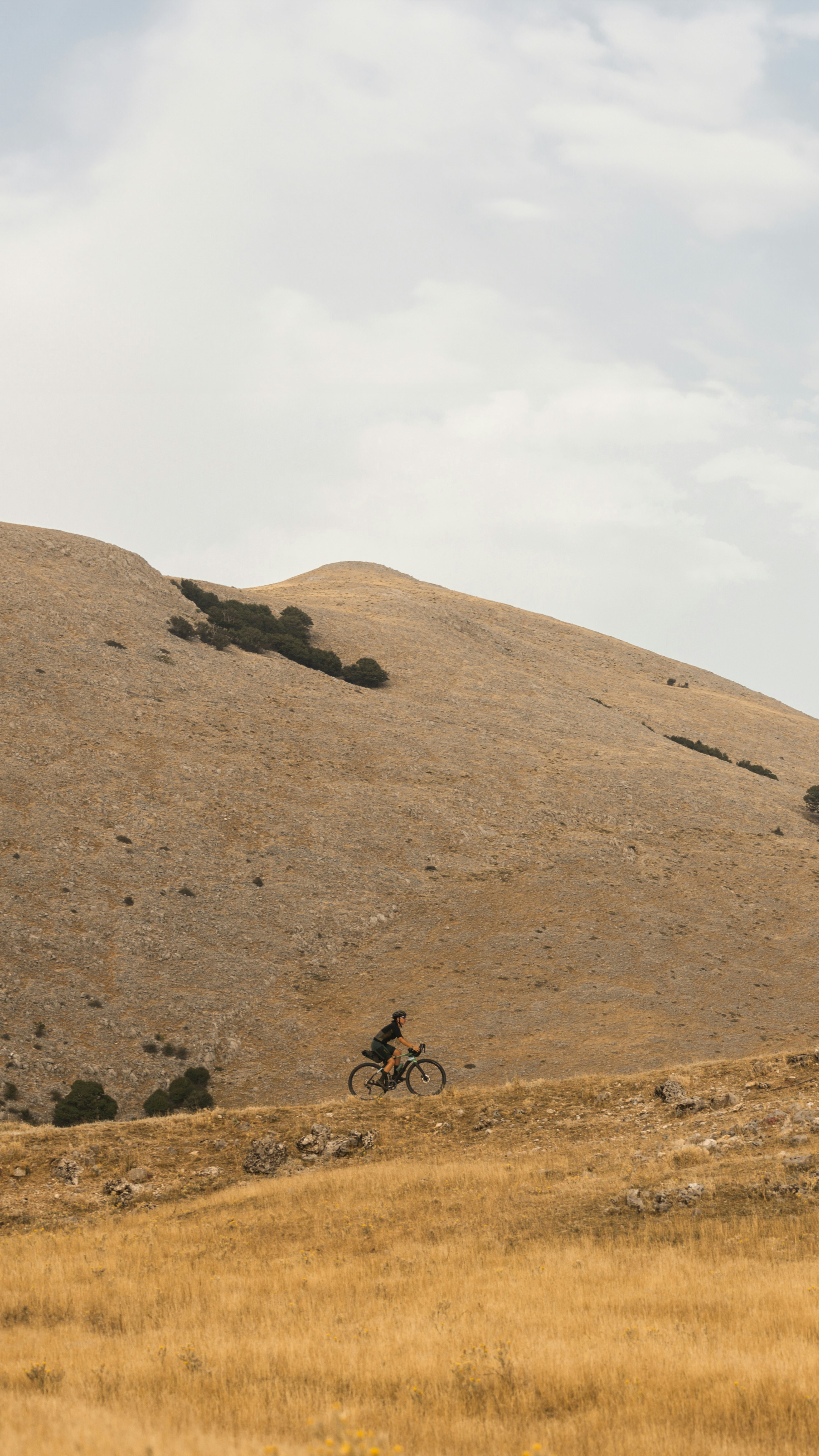
Wander & Wonder
A tour of the Madonie, to lose yourself and to find yourself again, filled with wonder.
Period
Jan - Dec
Elevation difference
6807 m
Total Length
174 km
Duration
3/5 Days
Y
Wander & Wonder
00
Intro
01
Palermo and Monreale: a prologue
02
From Cefalù to Castelbuono: the heart of the Madonie Basse
03
The ring of San Mauro Castelverde
04
Towards the Petralie, the southern terrace of the Madonie Alte
05
A thermal dip at Sclafani Bagni
06
Polizzi-Cefalù: from the Madonie to the Tyrrhenian Sea
Here you realise, at the same time, how far away Italy is and how long it is if you want to travel the whole way. But after visiting the Madonie, setting off from Palermo, we’ll return home with the impression of having seen practically all of Italy in less than 200 kilometres. That’s because almost all the traits of the Italian landscape are featured in this route. But we must always bear in mind that this island is actually somewhat of a joint between Africa and Europe and that on the other side of the Mediterranean there’s more than just the hot wind that we feel blowing at our backs. From Cefalù to Petralia, it almost seems as if we’ve wandered through the hills of Tuscany, or the mountains and valleys between Piedmont and France, or even the Dolomites, the forests in the backcountry of Liguria and Apulia, the badlands of Basilicata, the remote hamlets of Abruzzo.
So, let’s set off and, as Paolo Conte sings, let us also try to put, not in our sandals, but under our wheels, as much road as Gino Bartali had travelled, so as to cross this land, so close to the sea but also so distant, where sites and landscapes protected by UNESCO speak to us, at every turn, of the deep connection between geology, landscape, history and agriculture. Being on a bicycle allows us to truly take in the landscape: the sweat on the climbs, the warm breeze on the descents.
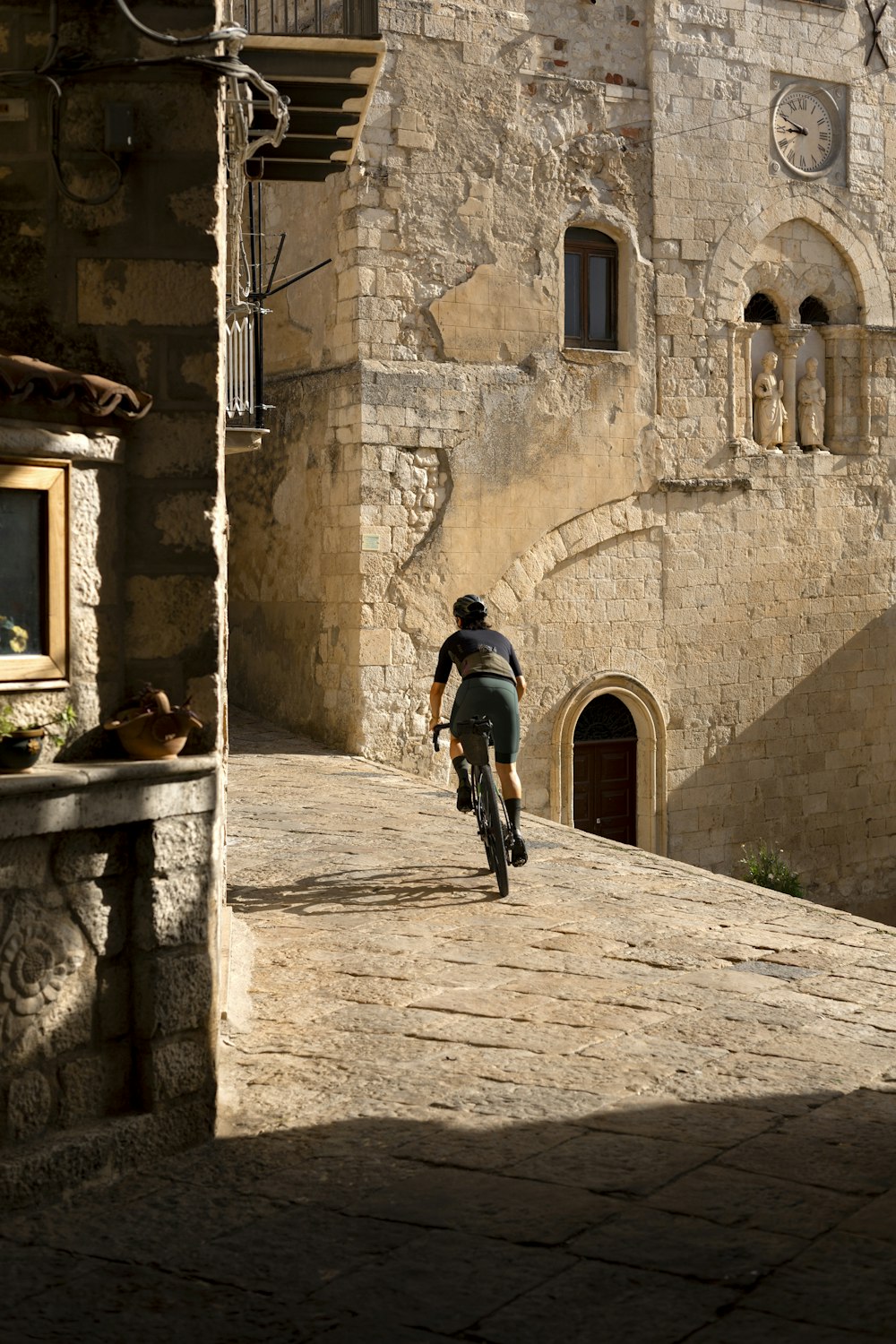
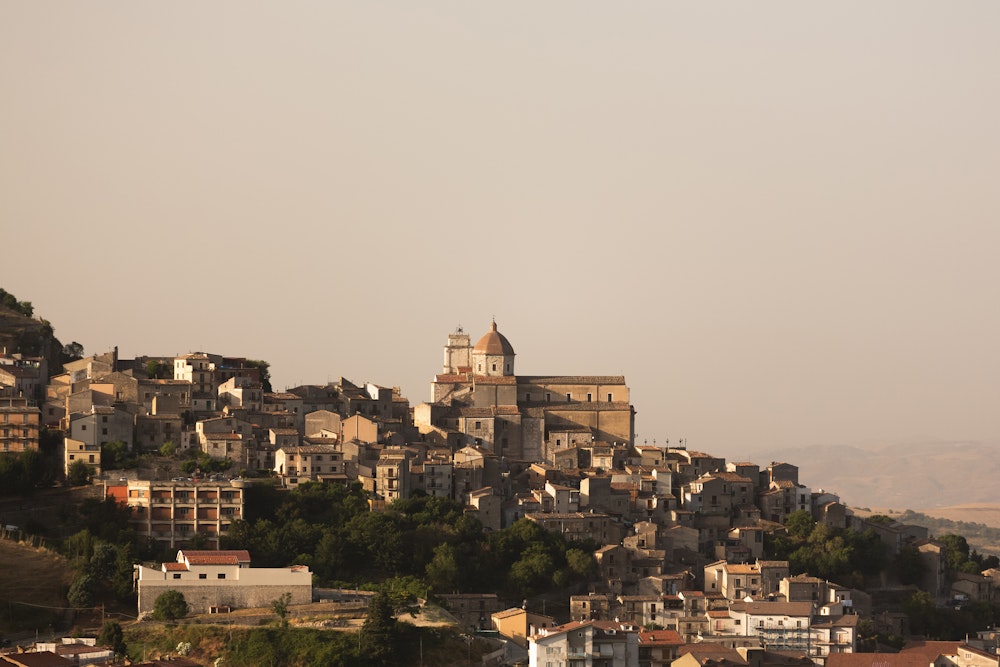
A landscape where the pace is set by pauses, where we learn to stay rather than go.
In short, a landscape made of landscapes: this is why we have decided to follow a ring-route along the imaginary shores of this island within an island, following the roads around Pizzo Carbonara which, at 1.979 metres, is the highest mountain of the Madonie.
But we could not get there without at least passing through the age-old city of Palermo, with its extraordinary Arab and Norman monuments, Baroque palaces, squares and markets.
We arrive at Punta Raisi airport, reclaim our bicycles and board the train to Palermo. We pass right next to the motorway and catch a glimpse of the exact spot of the massacre of Capaci. A flash in the memory so as not to forget, but our first goal is to walk through the markets of Ballarò and the Vucciria, enjoying a paper cone full of grilled octopus, taking a look at the monuments of the UNESCO site of the Arab-Norman City and recharging our batteries in a pastry shop at the Quattro Canti. A tight schedule, which makes us realise that on our return we must dedicate at least one more day to the wonders of this city.
Today, however, we choose to escape the centre through Porta Nuova and climb up to Monreale: a straight stretch of about ten kilometres for urban cyclists used to the worst, that cuts through the city from the centre and conquers the hillside.
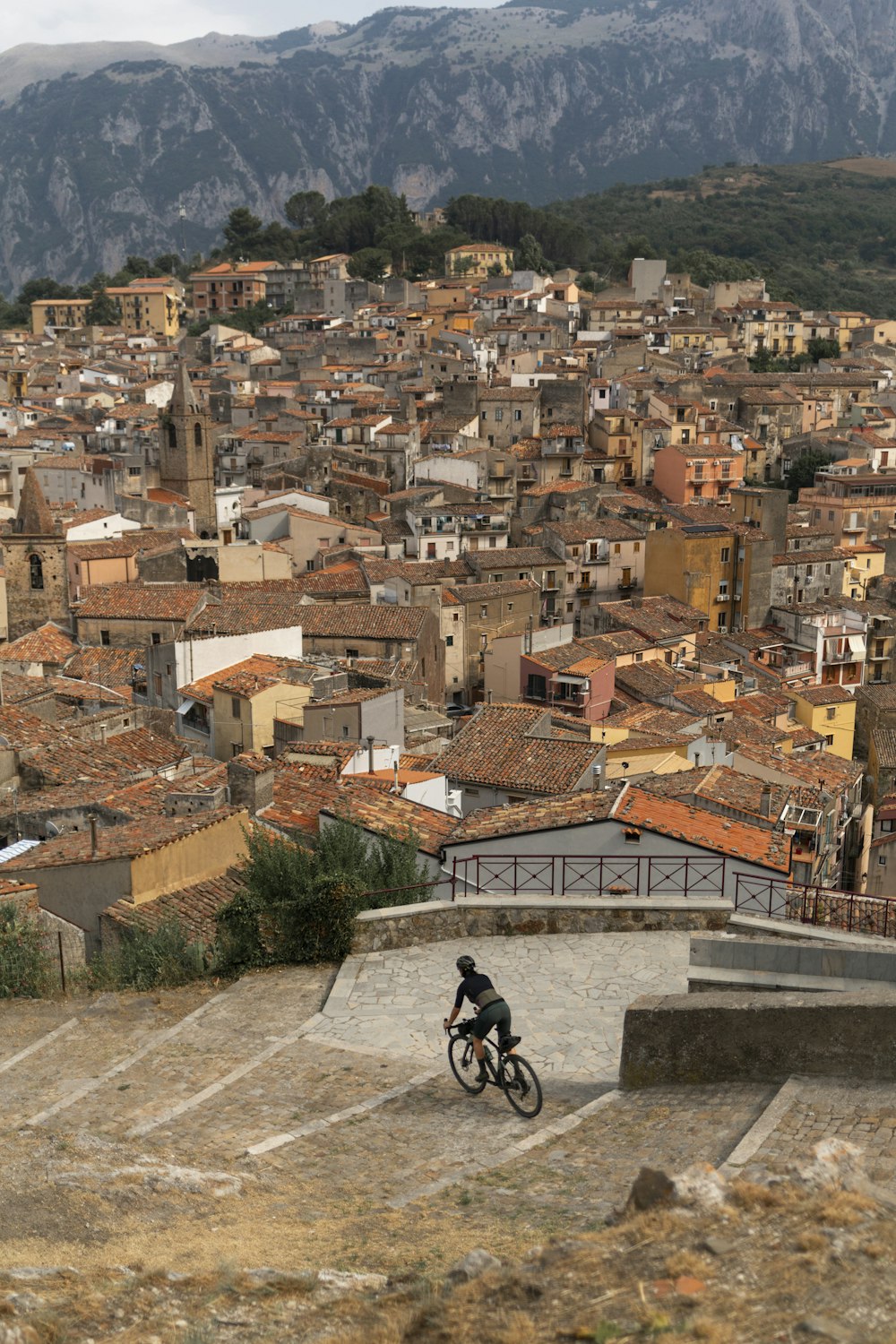
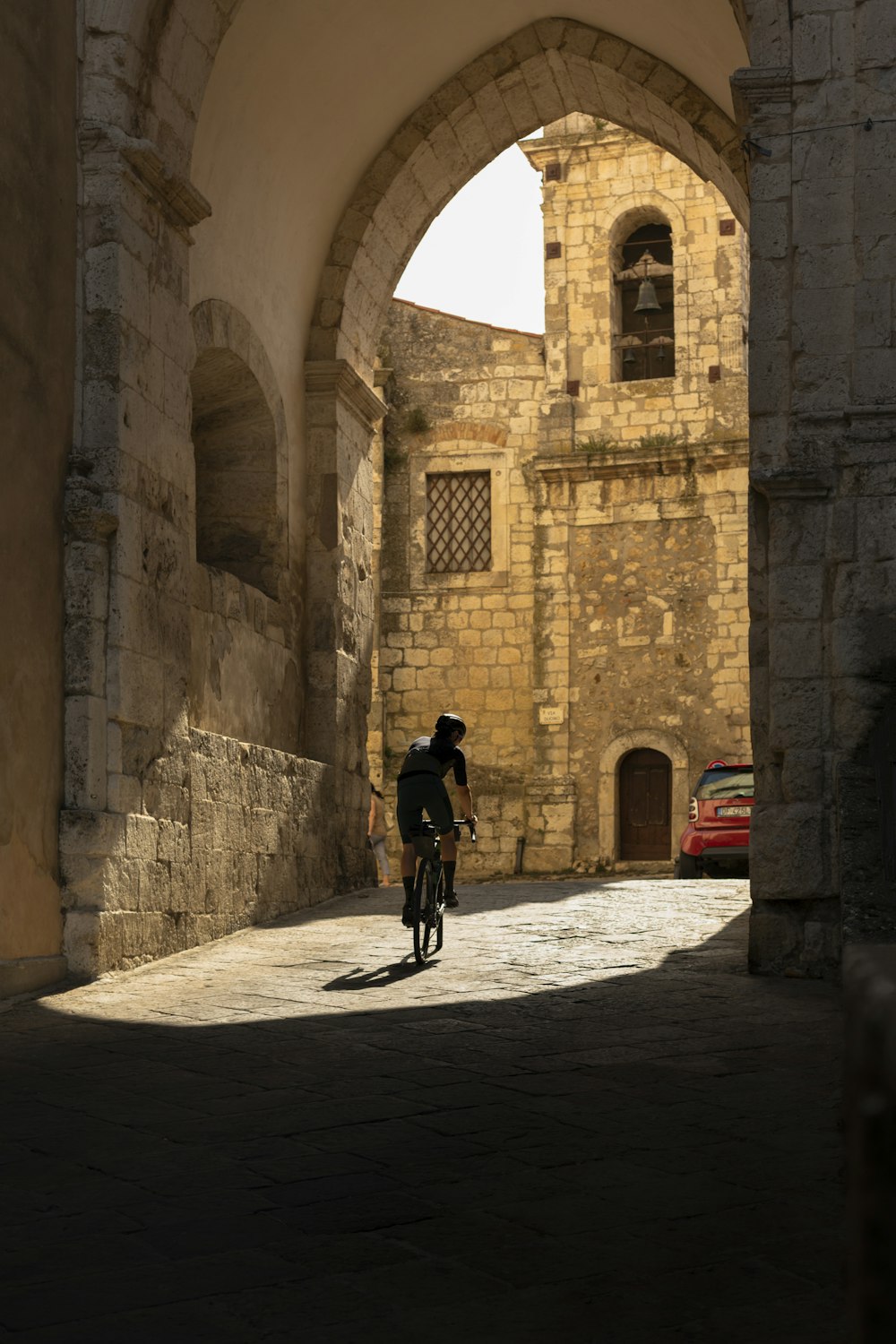
The magnificent piazza of Monreale is there to welcome us. From the roofs of the cathedral, we fill our eyes of ochre and blue with views of the Conca d’Oro, the sea and Monte Pellegrino. From up here it’s easy to understand the wonderment that would seize those who embraced with their gaze the ancient Panormos, which in Greek meant all-port.
We return to the centre through side streets, but these soon lead straight into the fortifications of the busy urban highway that surrounds the historic centre. Another piece of adventure, but we get out of it unscathed and finally enjoy a cup of coffee under the monumental ficus tree in the Giardini Reali del Palazzo dei Normanni, before visiting the Cappella Palatina and quickly making our way back to the station, where we’ll catch the train for Cefalù.
From there we really will begin our circumnavigation of the monti delle Madonie. The train quickly cuts across the coast, passes the plain of Termini Imerese and gives us a glimpse of the Rocca that towers above the town of Cefalù and protects it. In the background we already see, standing at almost 2000 metres of altitude, Pizzo Carbonara, which will be, as we said, the beacon of our journey.
We get off the train and decide we must immediately visit the extraordinary cathedral-fortress (also under the watchful protection of UNESCO), which overlooks a piazza full of cafés and tourists, well out of sight of the beaches around the small port.
Alessandro, my travelling companion, leaves the cards for a moment and disappears into a shop on the hunt for arancine di riso, fried rice balls, and we soon realise that the discovery of exquisite food will be common theme throughout our entire journey. Time dilates, but we also realise that this, more than any other, is a land where travelling takes on the dimension of staying rather than that, albeit necessary, of going.
Eventually, we decide to hop onto our saddles, with the idea of riding along the coast while remaining at altitude, so as to avoid the traffic on the coastal road.
We manage this, on dirt and single tracks: we avoid the railway construction sites, we pass through vegetable patches and gardens under the imposing viaducts of the motorway, we pass one of the many wire mesh gates that, we later understand, are not there to block our access, but simply as protections for the goats, sheep or cows that we often find along the way.
Further on we reach the stunning, scenic viewpoint of Rocca Pennuti: we are above the village of Finale, which is the coastal part of the municipality of Pollina. We see below us the promontory of Rais Gerbi, with its ancient tower and beautiful tourist resort, made up of houses, paths and gardens well integrated and hidden in the Mediterranean scrub.
With the aim of avoiding the dirt roads of the stretch of coastline from Cefalù – magnificent, but undoubtedly a little complicated – the ideal solution is to travel from Palermo to Finale by train and start the tour from the station called Pollina-San Mauro Castelverde, even though these villages are actually located high up in the backcountry. Works to upgrade the railway line and the construction of new cycle paths will soon make the connection even better. If we choose this option, we can still set aside some time at the end of our tour to visit Cefalù and its magnificent cathedral.
On the beaches at Finale di Pollina, we are in what we could consider, together with Cefalù, the gateway to the Madonie, the ideal landing place to leave the coast and enter the inland. And we are reminded of Dino Buzzati, who, describing in the columns of the Corriere della Sera the Palermo-Catania stage in the epic 1949 edition of the Giro, wrote: «The fantastic cliff of Cefalù? The famous cathedral ‘superb Norman-style temple started by Re Ruggero in 1131’, etc.? What do the cathedrals, the sea, and landscapes matter today, even if they are among the most powerful in the world? Only the road exists now; the road that goes up, steep and hard and does not surrender. What’s good has begun».
We too set off from the coast, aiming for the village of Pollina that looks down on us from above, and the climb that goes there immediately forces us to stand up on our pedals. A mirage at the top of this ascent, which creeps between the vegetable gardens, shrouded by the mists that often rise in the morning from the sea.
Castelbuono, the first stop on our journey, appears as soon as we cross the hills behind the sea. It awaits us from a somewhat hidden position, in the centre of the valley, immersed in the manna ash forests where sap is still extracted using ancient techniques, and among olive groves and vineyards, from which excellent oil and wine are produced. A beautiful village, full of churches and museums, a lively piazza with cafes and a walk culminating at the Castello di Ventimiglia. A community that guards treasures of culinary culture, which from Sicily leave their mark all over the world and which we explore with curiosity, being amply rewarded. Castelbuono, with its territory, has also gone through the process to being recognised by UNESCO as a creative city, precisely in the area of gastronomy. Try it to believe it! You’ll be amazed to discover that, among other things, the best panettone cakes are sometimes not necessarily found in Milan... We happened to be there during a festival, welcomed with pane e panelle – the delicious sandwich with chickpea flour flatbreads – and a thousand other delicacies, accompanied by the mayor, a visionary with a thousand ideas. Castelbuono, which in Italian means which in Italian means ‘delicious castle’ really is so, by name and by nature. Speaking of festivals, if you come in August, don’t miss out on YpsigRock, the indie and alternative rock festival that has been attracting thousands of fans for almost thirty years. In short, it is a town rich in all types of culture, not just the highly refined one of food. However, in keeping with the trip’s leitmotiv, before leaving, we stock up on carbohydrates with a magnificent plate of pasta with broad bean macco.
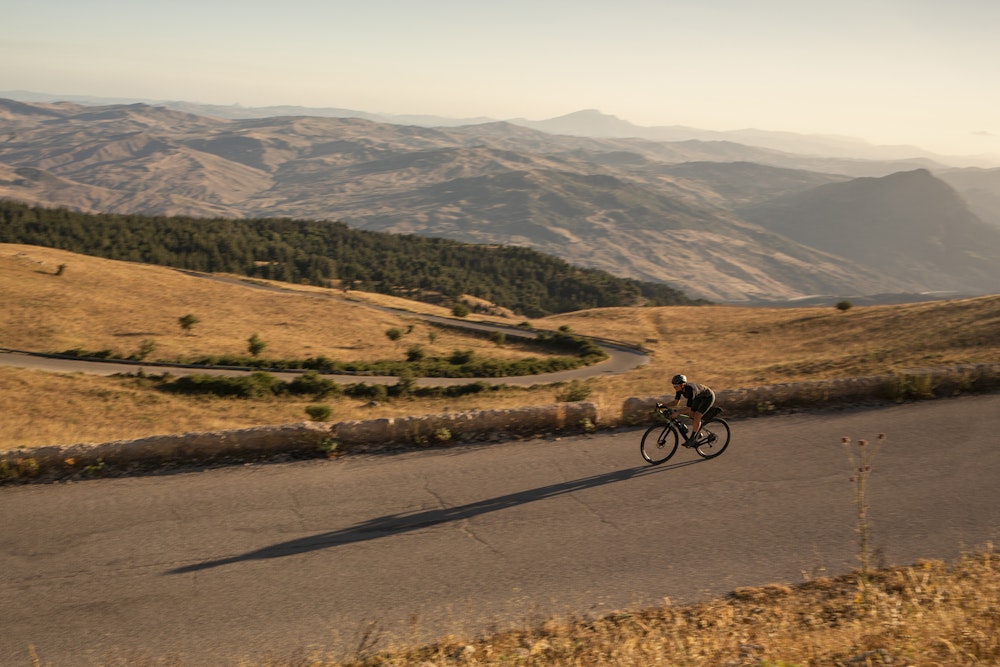
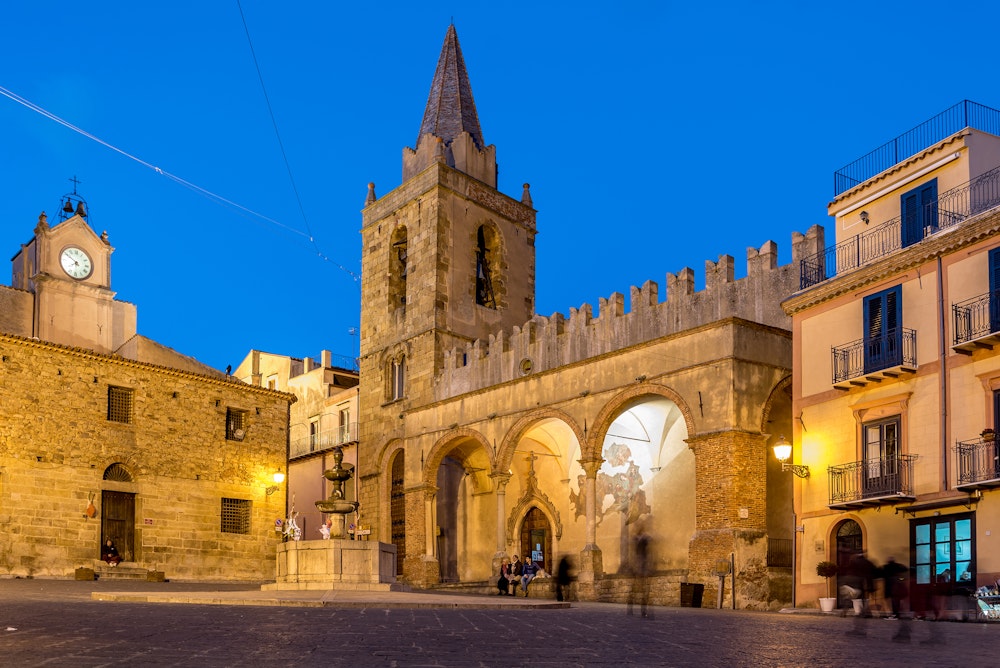
Castelbuono, we understand immediately, is the perfect place where to stop. For those who have a little extra time, it’s also worth making a detour from here to San Mauro Castelverde, that you can reach along the beautiful valley that descends towards the Pollina river, perhaps making a another detour to descend to the Gole di Tiberio, one of the sites of the Geoparco delle Madonie, also listed by the UNESCO. This is a canyon formed on Mesozoic limestone outcrops shaped by the fluvial erosion. In short, a deep cut in the valley, where cool waters flow. The river can be descended by raft or on foot. Where it can penetrate, the light shines drawing spectacular arabesques on the rock walls. But beware of the ascent to San Mauro. Take it easy on the asphalt. Rather than knobby tyres, the road that cuts across the contour lines could do with a cog and rack system!
From Castelbuono we resume our itinerary on asphalt and head towards Geraci Siculo. Through dense woods, the road climbs in wide curves to a sort of hill, where there is a peculiar system of drinking troughs and fountains: this is the monumental bevaio della Santissima Trinità. From here you enter Geraci, halfway up the hillside, with breathtaking views of the valley. In the paizza, well hidden inside the village, we can finally sit at a bar and have a beer, mixing with the locals who continue to play cards, barely surprised by our presence. But don’t limit your tour to the central square: walk through the alleys of the village and look for the salto dei Ventimiglia, a glassed-in terrace suspended between the houses, from which on a clear day you can enjoy an amazing view, from the Isole Eoilie to Etna. We get back on the road that will lead us south. From the bends that follow the side of the mountain, we soon break away to enter a different landscape, made of gentle hillsides cultivated with wheat or used as pastureland. The descent to Gangi, which you can see in the distance, is one of the most evocative parts of the journey, in a landscape that sometimes reminds us of Tuscany, although here the sense of solitude and isolation is definitely stronger.
From this side Gangi comes into view as a thin outline of houses on the mountain ridge, overlooking a dense forest. When we reach it, however, we realise that the village is not so small, and stretches all along the south-west side. Again, do not hesitate to wander through the narrow streets of the centre, often cluttered with cars parked in places you would think impossible to reach. Occasionally you will have to carry your bike by hand up and down stairs: but you will be rewarded by sudden and fascinating glimpses of the surrounding landscape. The Piazza del Duomo offers one of the most suggestive viewpoints.
The streets going down (or up!) are paved with large slabs and very steep. A short but intense Paris-Roubaix, which will put to the test the most elastic bike forks and well trained arm muscles.
From the valley floor, the road leads towards Castellana and passes through Raffo and the salt mines, which also house a museum of contemporary art. A lonely and suggestive route takes us back to the Petralie mountains: the two villages, Soprana and Sottana, at an altitude of over 1.000 metres, are a spot from which to take a satisfied look at the road we have cycled, but above all where to plan our next move. In Petralia Soprana we cannot miss the amazing belvedere hidden behind the apse of the church of Santa Maria di Loreto. From here we descend to Petralia Sottana, where we are welcomed in the small osteria, with a plate of sweet and sour prickly pear peels and fresh pasta, accompanied by a good glass of Passomaggio, a fragrant red wine produced in the vineyards that on the Castelbuono hills look out to the sea.
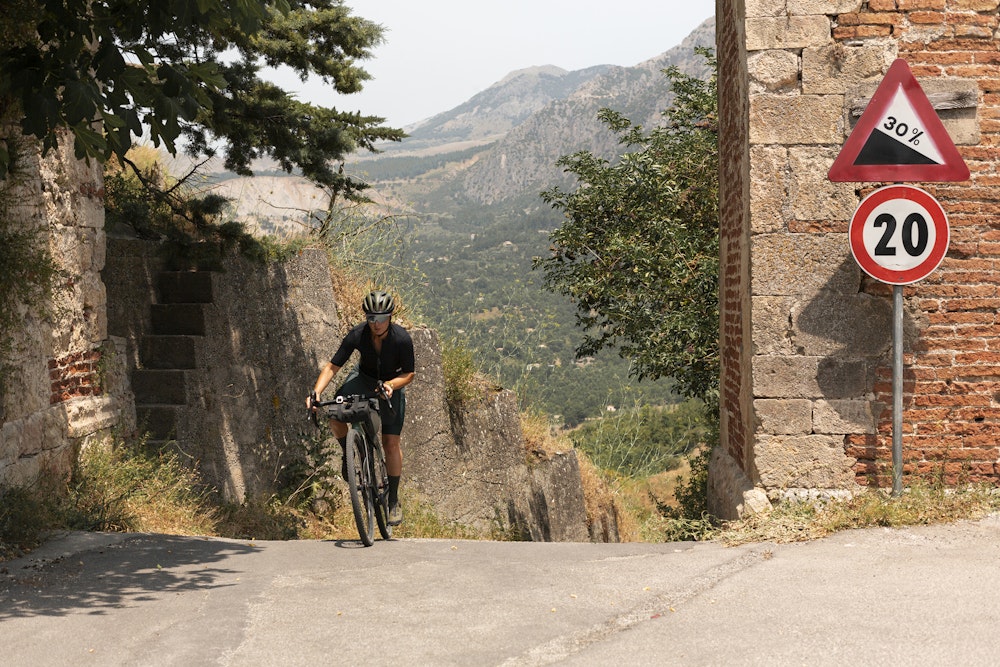
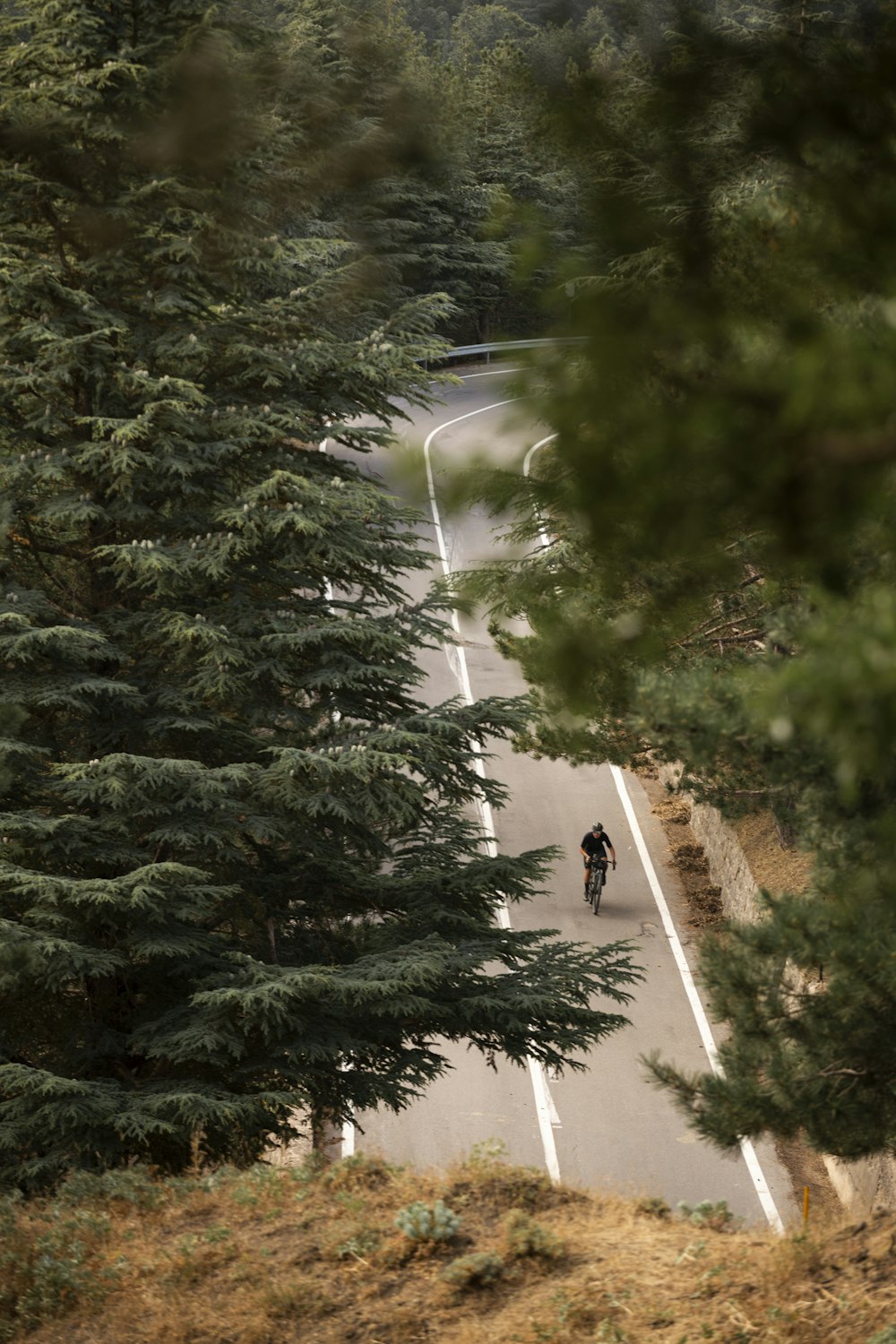
We talk with Francesco, our bicycle dealer and a great expert of the area. Together with Calogero, the next day he will accompany us to hidden terraces overlooking the territory or inside a church with a historiated altar that has no equal, treading the stones of the urban geological path that emphasises the uniqueness of this UNESCO-protected landscape.
Petralie (Soprana and Sottana), both recognised as two of the most beautiful hamlets in Italy, are well worth a stop. We make the most of it and, over the next few days, we cycle along another ring, the one that takes us south-west, to Sclafani Bagni, for about seventy kilometres that lead us into one of the most hidden, precious and silent areas of Sicily; then it will be time to tackle, from south to north, the crossing of the Madonie, and reach the Tyrrhenian coast.
From Petralia Sottana we descend to Polizzi Generosa, that means ‘generous’ in Italian – a name we already like – first taking the beautiful main road and then, before Castellana Sicula, cutting through Calcarelli and descending to Scillato. From here, a turn to the left takes us towards the clearly recognisable profile of the Rocca di Sciara, the majestic mountain etched by Maurits Escher, that towers over Caltavuturo, a town of Byzantine origin but with a suggestive toponym that is half Arab and half Sicilian: qal’at, stands for fortress, castle, while vuturu is, in Sicilian dialect, the griffon. From the Castle of the griffon, we reach the mythical crossroads of Sclafani Bagni, a spectacular stage of the Targa Florio. After a short detour, a few hairpin turns take us to the village that awaits us, where there once stood a now abandoned spa, a sulphurous water spring that gushes out at 36°C in a small natural pool. We take a dip on this warm September day and came out smooth and toned, regenerated and ready to get back on our saddles.
The return route bypasses Caltavuturo and then descends to the valley where the motorway runs. Be careful, though: this is a challenging route, with long dirt tracks on the descent to the valley floor, before climbing back to Polizzi on asphalt.
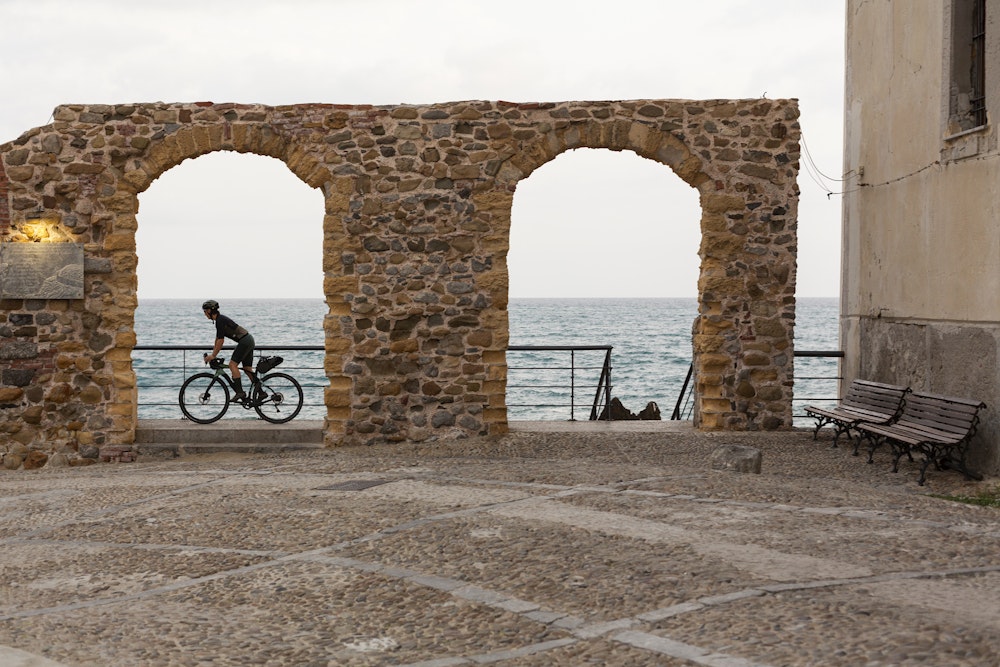
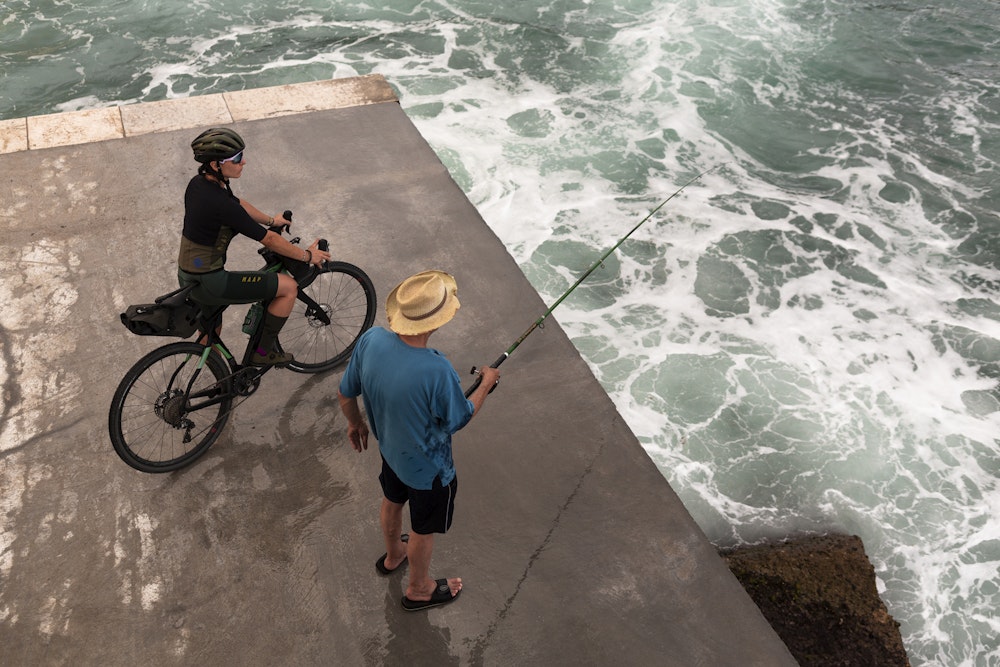
The following morning, we set off from Polizzi for the last leg of our journey. Today’s will be a true horizontal crossing of the Madonie. We stock up on high-energy almond sweets in an old-fashioned pastry shop, just off the square that opens out like a balcony towards the valley crossed the previous day and towards the mountains that we’ll be facing in a northerly direction. As we descend to the foot of the village, we fill our flasks with fresh water from an old drinking trough and then, we leave behind us the arches of the ancient aqueduct, already in place in Roman times and rebuilt on several occasions until the 19th century.
The road gradually rises in altitude. The scenery is spectacular. To our right are the ridges of Mount Quacella and Mount Mufara, passing by one of the access points to climb up and see the famous, extremely rare Nebrodi firs (there are apparently only twenty-six left). Heading to Portella Colla, we cross a mountain landscape that, for its wide-open spaces, reminds us of the ascent of the Casse Déserte, under the Col de l’Izoard, or certain parts of the Col delle Finestre towards Pragelato. At Portella Colla, we pass the road that leads to Piano Battaglia and the rifugio Marini (CAI mountain hut and bike hotel), on the slopes of the monte Mufara, and head for the 1.200 metres of Piano Zucchi, crossing wide clearings amidst dense and cool beech and holm-oak woods, often sighting the many fallow deer that roam freely. We descend and arrive at the Mongerrati crossroads. On the left, directions indicate Collesano (see infobox), but we take a right towards Isnello, a small village suspended between a deep gorge and the mountain.

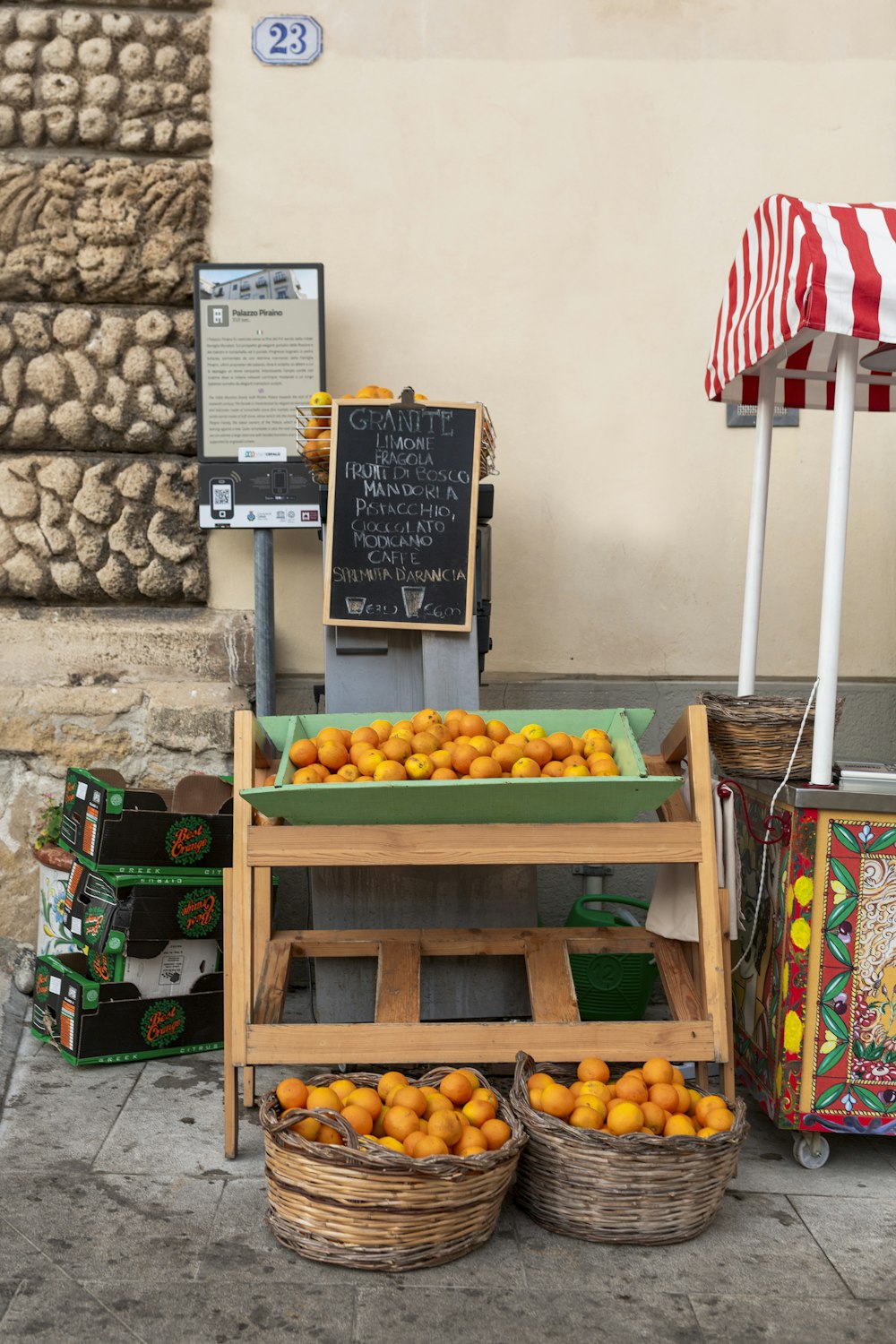
From here, a geological path of great interest unfolds, part of the Geoparco UNESCO delle Madonie. It would be worth stopping here and waiting for the night, even just laying out a mattress on the grass, under the most beautiful starry sky in Italy; this whole area is famous for the absence of light pollution and here, in fact, is located the Gal Hassin astronomical observatory. From Isnello, passing through Gratteri, or directly, with a long steep descent that passes by the santuario of Gibilmanna, we return directly to the coast. In the end, we get back to Cefalù, where we close our wide tour of the Madonie on a September day, at sunset, whith shadows becoming ever longer. Our eyes are full of everlasting satisfaction and one certainty: this has been a journey of discovery and amazement. Here we explored the most hidden nooks of a unique landscape, where we had reasons to be amazed, and understand the revealing alliteration of ‘wander’ and ‘wonder’. We will be back soon, to share with our closest friends the amazement of the places we have just started to explore, to reread together the pages of this extraordinary book that is the landscape of Sicily, and to celebrate the discovery of its most unknown corners.
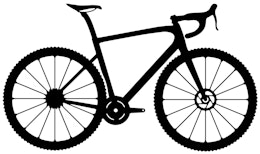
Bike type
Gravel
* informazione Publiredazionale
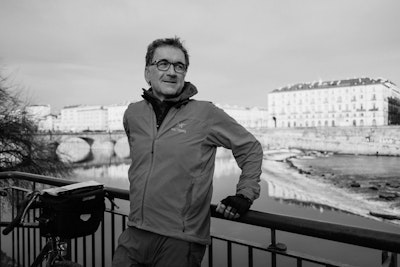
Texts
Andrea Rolando
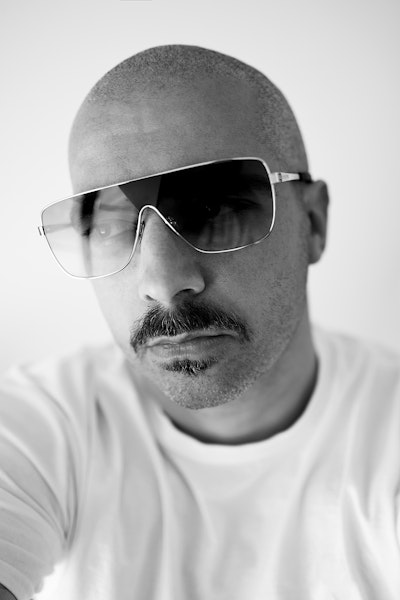
Photos
Rosario Liberti
Cycled with us
Francesca Baldanza
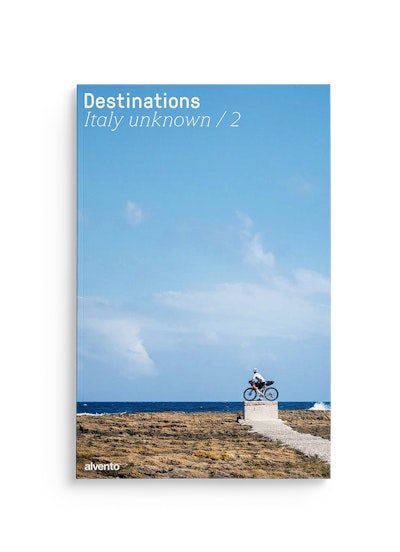
This tour can be found in the super-magazine Destinations - Italy unknown / 2, the special issue of alvento dedicated to bikepacking. 12 little-trodden destinations or reinterpretations of famous cycling destinations.
